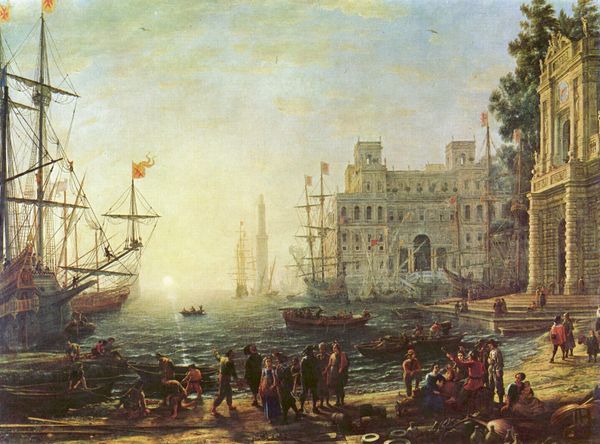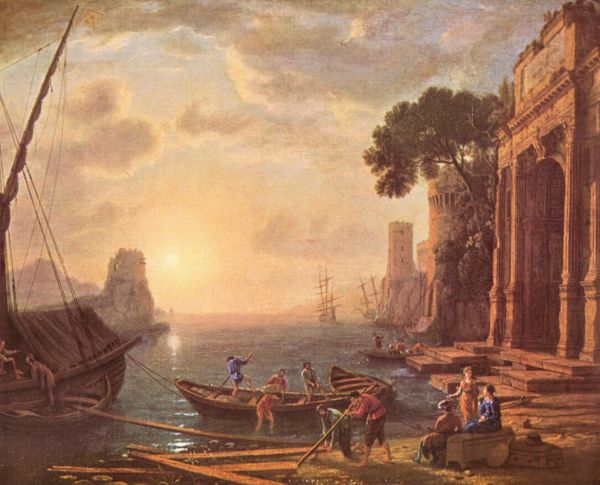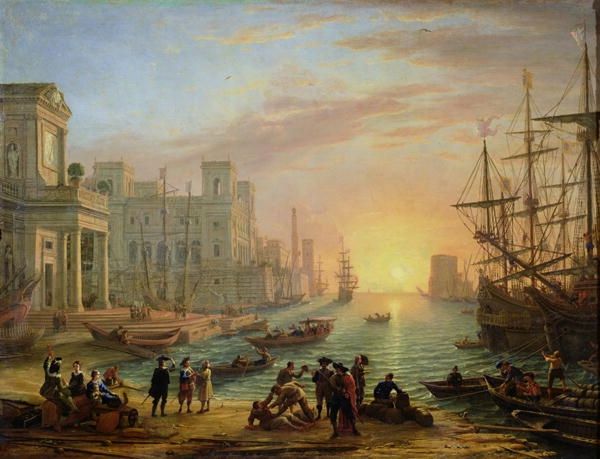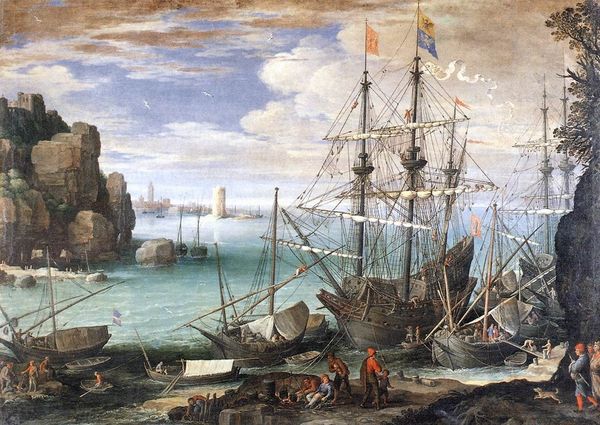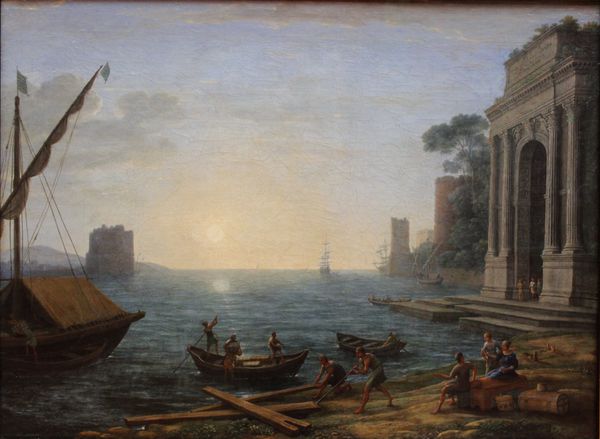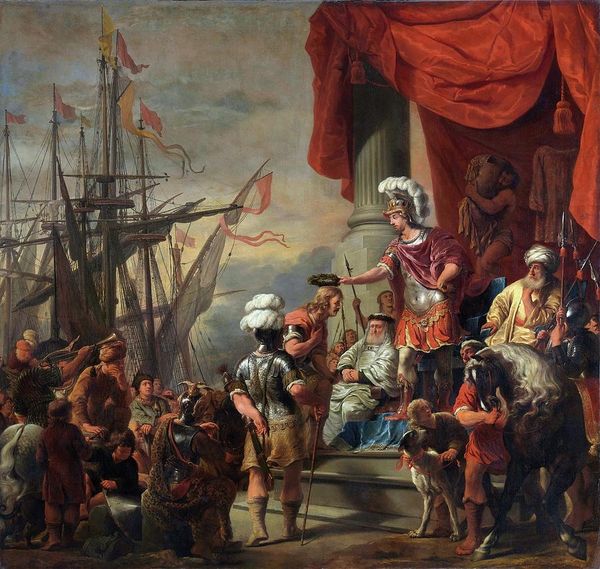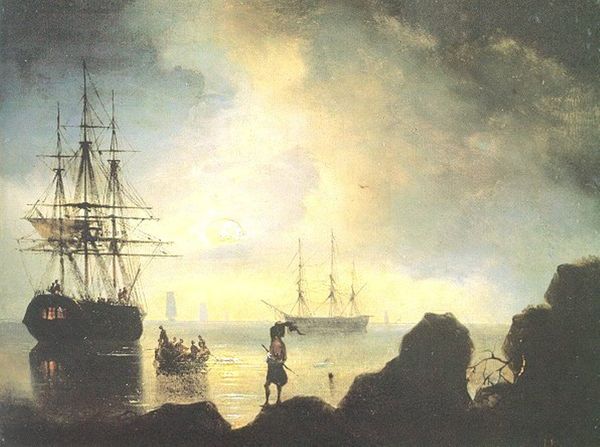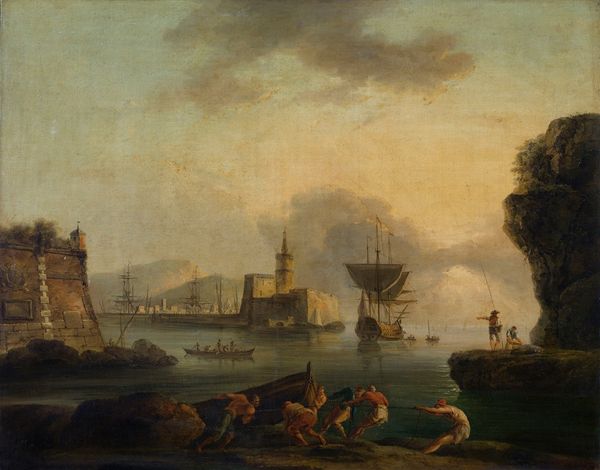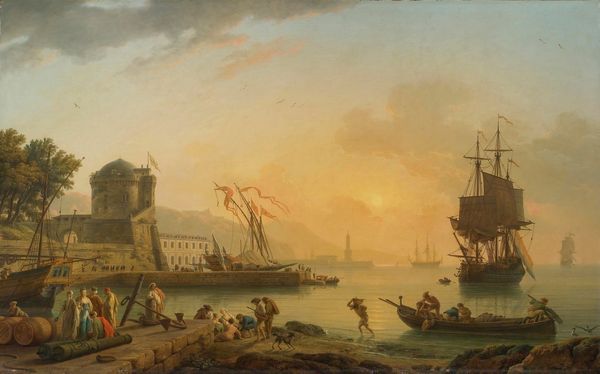
painting, oil-paint
#
boat
#
baroque
#
ship
#
painting
#
oil-paint
#
landscape
#
oil painting
#
men
#
watercolour illustration
#
history-painting
#
academic-art
Dimensions: 168 x 119 cm
Copyright: Public domain
Curator: What a majestic harbor scene! This is Claude Lorrain’s “Cleopatra Disembarking at Tarsus,” painted in 1642. The oil on canvas currently resides in the Louvre in Paris. Editor: Immediately, I’m struck by how Lorrain uses light—almost like a stage spotlight—to emphasize Cleopatra and her entourage. It's visually arresting, yet it feels somewhat artificial. Curator: That’s typical of Lorrain. He manipulates the landscape and historical narratives to fit his aesthetic ideals. The scene isn’t really about historical accuracy. Instead, Lorrain is making a statement about the grandeur of the 17th century, using Cleopatra’s arrival as an excuse. Editor: Absolutely, it’s interesting to consider the socio-political context. The 17th century, and the height of absolutism... Does the artist draw some comparison between Cleopatra as ruler and contemporary monarchy? The imposing architecture becomes not just backdrop but active participant in solidifying the ruler’s dominance. And by setting it in the past, maybe he circumvents criticisms that he cannot levy directly at living rulers. Curator: Precisely! Art in that period often served to reinforce established hierarchies. Depictions of historical events were tools for communicating and solidifying power structures. Notice also the maritime details. Lorrain emphasizes naval power, critical for trade and military dominance, reflecting France's ambitions at that time. The scene is loaded with implied economic and imperial significance. Editor: Looking through contemporary lenses, I also wonder about its reception for marginalized communities. How do these displays of power impact people then and even now, for whom history is defined by conflict and exploitation rather than celebration? Who benefits from this historical narrative, and whose voices are silenced or erased? Curator: Those are crucial questions, especially as we revisit history through diverse perspectives. "Cleopatra Disembarking at Tarsus" presents not just a historical scene but a carefully crafted political statement, mirroring the aspirations and biases of its era. Editor: Considering our discussions, this painting shows us history not as fact but as a powerful construction – both of image and social structures. Curator: Agreed, it urges us to constantly analyze art's place within broader societal conversations.
Comments
No comments
Be the first to comment and join the conversation on the ultimate creative platform.
